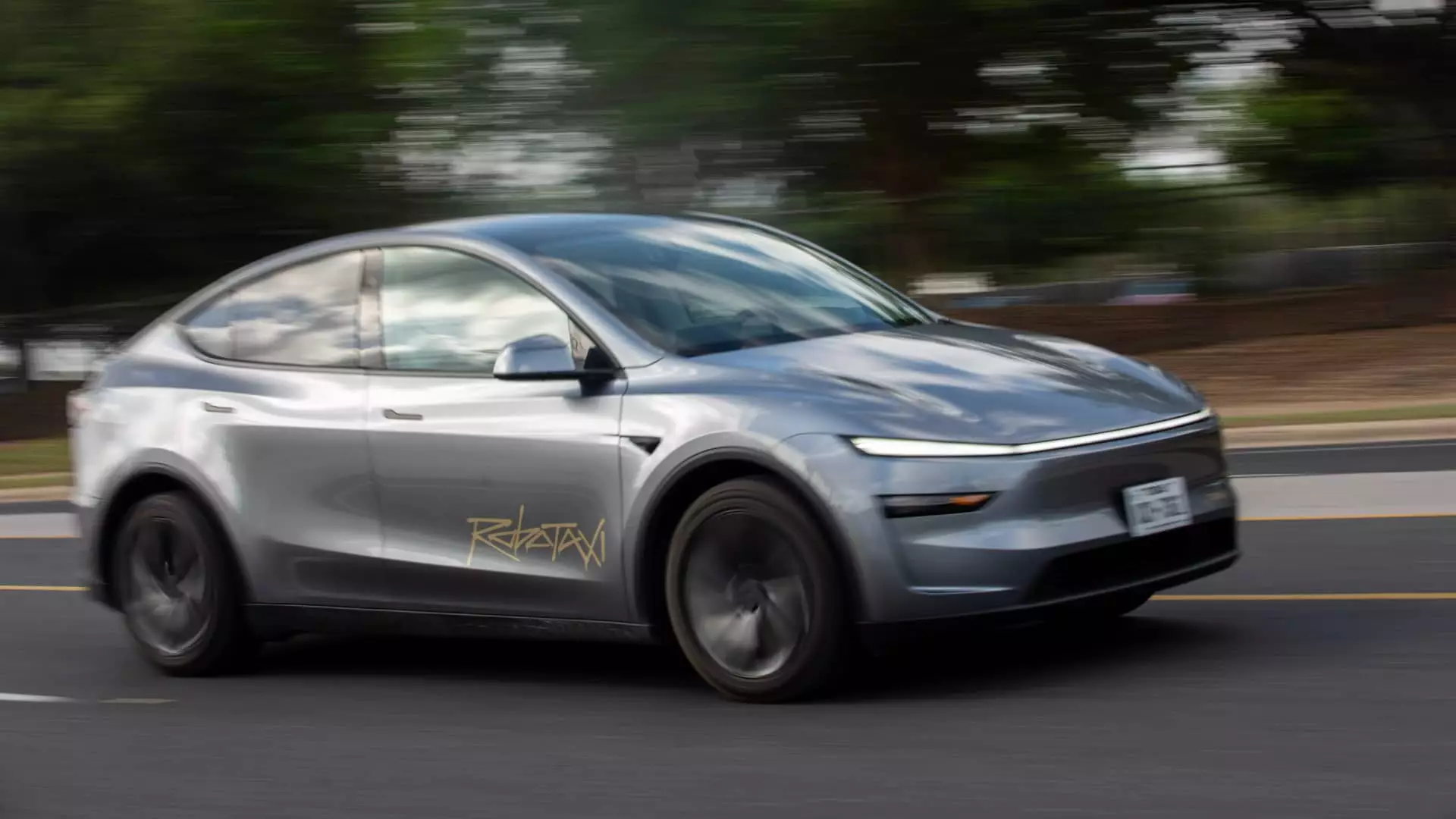Tesla’s bold proclamations about expanding its robotaxi service have ignited a wave of anticipation within the tech and automotive communities. Elon Musk, ever the visionary, hinted that Tesla plans to extend its autonomous passenger service into the bustling streets of the San Francisco Bay Area, promising a future where vehicles might be driverless cabs bustling through city streets. Yet, beneath this ambitious vision lies a stark reality—regulations and legal frameworks are catching up with technological advancements. While Musk’s enthusiasm paints a picture of a near-future transit revolution, the regulatory response is reminding us that the journey is far from seamless.
The California Public Utilities Commission (CPUC) has made it clear that Tesla cannot legally operate autonomous ride-hailing services with paying passengers without a human driver behind the wheel. This regulatory stance emphasizes a cautious approach, prioritizing safety and legality over rapid innovation. Although Tesla has a permit to run non-AV, driver-assisted services, it cannot legally take paying customers in fully autonomous vehicles on public roads in California. This limitation turns what might seem like a game-changing mobility solution into a more traditional, driver-led taxi service—at least for now. Tesla’s ambitions, therefore, must be tempered by the current legal landscape, which still views autonomous vehicles primarily through the lens of testing, rather than commercial deployment.
This regulatory stance underscores a fundamental challenge: rapid technological development often outpaces existing legal frameworks. Tesla’s reported plans to extend operations to friends and family illustrate its ongoing efforts to test the waters, but it cannot skip the legal hurdles. These restrictions serve as a reminder that autonomous vehicle (AV) deployment is as much a policy issue as a technical one. The regulatory agencies are rightly cautious, concerned about safety, liability, and public trust, and these concerns must be addressed before widespread autonomous ride-hailing can truly take off.
Tesla’s Regulatory Struggles: A Tale of Ambition and Restrictions
Tesla’s current standing in California is a complex interplay of permits, testing laws, and regulatory oversight. Since 2014, the California DMV has allowed Tesla to conduct driver-attended AV testing, but this permit does not authorize the company to operate as a commercial robotaxi service. Tesla’s current testing in Austin, Texas, exemplifies this cautious approach: a limited service with human safety drivers overseeing operations during daylight hours and favorable weather conditions. This pilot program, restricted in scope and access, highlights the step-by-step, cautious process required for autonomous mobility deployment.
Tesla’s public disclosures about expanding robotaxi services are met with skepticism and regulatory caution. The internal memos revealing plans to roll out in the Bay Area suggest an eagerness to accelerate, yet the regulatory reality remains stringent. The California DMV and CPUC are craftily enforcing existing rules, and Tesla’s efforts to push boundaries are met with bureaucratic resistance, emphasizing the importance of formal permits and safety protocols. The company’s aggressive marketing—showing FSD capabilities with hands-free use—clashes with regulatory assertions that such systems require active driver supervision. These discrepancies threaten to undermine consumer trust and invite closer scrutiny from regulators, risking future sanctions, including possible license suspension.
The contrasting approaches of companies like Waymo, which operates under explicit permits for driverless service, highlight the inconsistencies in the industry. While Waymo carefully secures the permits needed to launch commercial operations, Tesla’s approach seems more informal and less regulated—even as it pushes for a disruptive presence in the market. This puts Tesla at a crossroads: to continue pursuing rapid expansion or to accept the incremental, cautious march mandated by legal authorities. Failure to navigate this regulatory landscape could hamper Tesla’s ambitions more than hardware or software limitations, exposing the importance of compliance and transparency.
Community Engagement and Industry Significance
One of the most overlooked facets of Tesla’s autonomous ambitions is community trust. Local officials and residents play a vital role in shaping how quickly or slowly these technologies become integrated into everyday life. The lack of proactive communication from Tesla about its plans to deploy robotaxis in California has raised eyebrows and concerns. Stakeholders like Marin County supervisors expressed frustration at the lack of transparency, highlighting that public acceptance hinges on open dialogue and community involvement.
This skepticism among local decision-makers underscores a deeper issue: technology companies cannot operate in isolated bubbles. The public and regulators are wary of a “move fast and break things” mentality, especially when public safety is at stake. Tesla’s reputation now hinges, in part, on how effectively it can engage with communities, answer concerns, and demonstrate the safety and reliability of its systems. Ignoring local voices risks public backlash and regulatory pushback, which could delay or derail deployment altogether.
In comparison, competitors like Waymo demonstrate the value of methodical, permit-driven growth. By securing the necessary permissions, maintaining transparency, and engaging with local authorities, Waymo has cultivated a more favorable environment for its passenger services. Tesla’s challenge lies in balancing its disruptive ambitions with the patience and cooperation required to build trust. Successful integration of autonomous taxis into urban Life will depend not only on technological prowess but on strategic community engagement, regulatory compliance, and consistent safety validation.
The Future of Autonomous Mobility: Challenges and Opportunities
Tesla’s ongoing efforts highlight both the enormous potential and the inherent pitfalls of autonomous vehicles as a transformative industry. While technological breakthroughs are rapidly advancing, the regulatory landscape remains cautious, often hesitant to relinquish control to untested systems. Tesla’s aspirations to launch a broad robotaxi service are admirable, but they must encounter a series of legal, safety, and community hurdles that could significantly slow down progress.
In this environment, Tesla’s strategy will ultimately determine whether the company leads a revolution or stumbles over regulatory obstacles. Embracing regulation—not as an adversary but as a partner—may be the key to sustainable growth. The industry’s future depends on a cautious but confident approach, where safety and transparency form the foundation upon which innovation can truly thrive. Until then, Tesla’s robotaxi ambitions remain a tantalizing glimpse of what’s possible, but not yet a mainstream reality.

